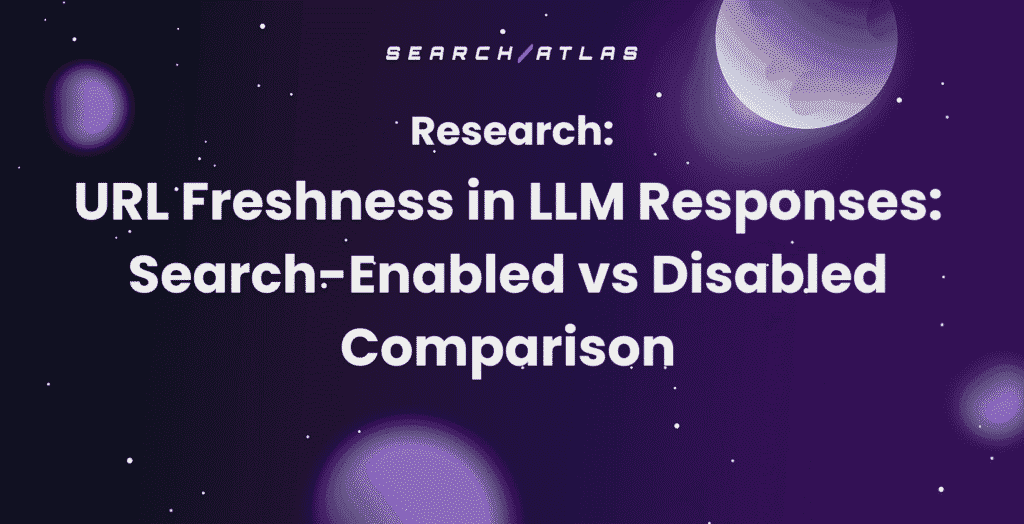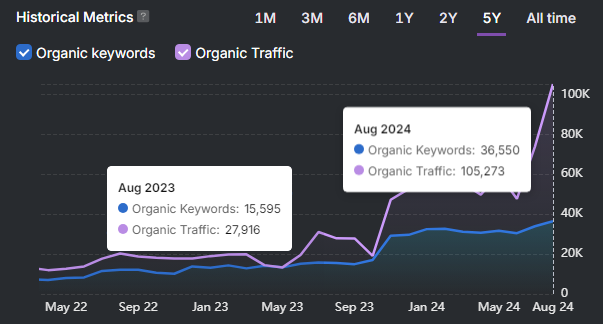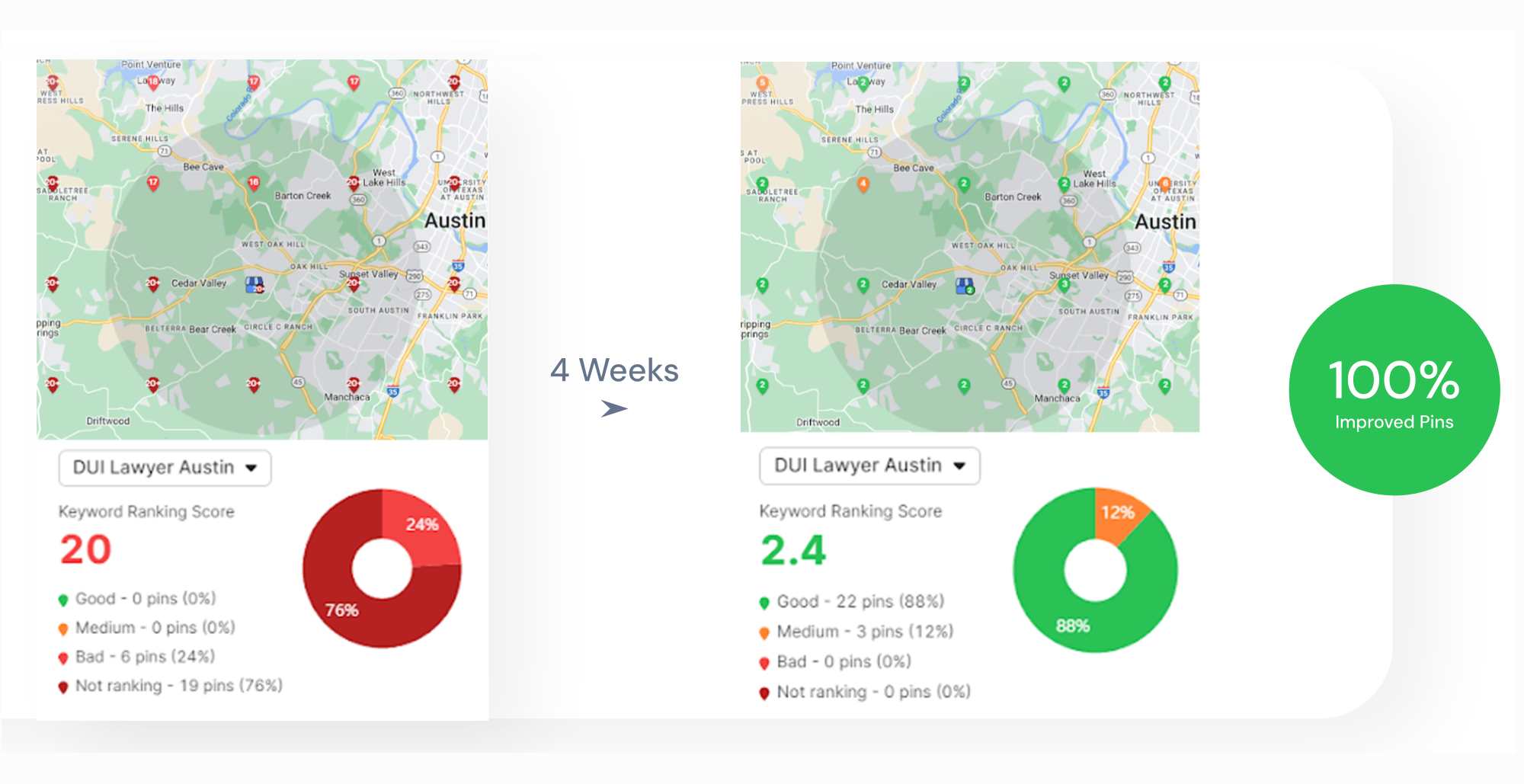A marketing press release acts as a strategic vehicle to announce brand news, product launches, or milestones that boost visibility and attract media coverage. Unlike broad announcements, it blends editorial relevance with keyword performance to deliver direct impact.
Marketing press releases elevate brand authority. Over 68% of businesses report stronger visibility through consistent campaigns. With 89% of journalists using press releases as reliable sources, this format plays a central role in business communication.
Press releases drive measurable growth in referral traffic, keyword rankings, and lead generation. This article explains how to use marketing press releases with precision, outlines the core components of a high-performing release, aligns efforts with business goals, and maps a focused distribution strategy.
What Is Press Release in Marketing?
A press release in marketing delivers a structured news announcement that informs media outlets and the public about significant brand developments. It presents events, product launches, company updates, or milestones in a clear format that attracts press coverage and shapes public perception.
Marketing press releases increase brand visibility and build credibility. They generate earned media coverage, drive targeted traffic, and position the company as a reliable source of industry news.
A well-crafted press release acts as an organic marketing asset. It improves discoverability, supports SEO, and aligns with broader communication goals.

What Is the Goal of a Press Release in Marketing?
The primary goal of a press release is to secure media coverage and generate public interest around a specific announcement. It delivers relevant information to journalists in a format that increases the likelihood of news pickup across media channels.
Press releases build brand awareness, direct traffic to strategic pages, influence public opinion, and position the company as an authority. Publication on high-authority platforms and distribution across channels contributes to organic reach and long-term brand equity.
What Are the Characteristics of a Press Release?
There are several key characteristics of a press release. The key characteristics of a press release are listed below.
- Newsworthy focus: Each release should cover a single, relevant announcement.
- Clear structure: Includes a compelling headline, strong lead, supporting details, and a boilerplate.
- Accurate facts: Dates, names, and stats must be precise and verifiable.
- Formal tone: Professional and objective language for journalistic use.
- Accurate contact information: Ensures media can follow up for more details.
- Engaging elements: Quotes, visuals, and links enhance clarity and engagement.
These elements work together to boost a press release’s effectiveness, making it easier for journalists to cover your story and for audiences to trust your brand message.
Why Use Marketing Press Releases in Your Marketing Strategy?
Marketing press releases serve as a strategic communication tool that generates visibility, influences perception, and supports growth across multiple channels. Integrated into a broader marketing plan, press releases act as high-leverage assets that align with long-term brand goals and measurable business outcomes.
There are many advantages of press releases. The many advantages of press releases are listed below.
- Increased brand visibility: Strategic distribution boosts exposure across media outlets, search engines, and owned channels, drawing attention from journalists, influencers, and niche audiences without relying on paid ads.
- Enhanced brand credibility and authority: Publication in trusted media validates your brand, builds trust with stakeholders, and positions your company as an industry thought leader.
- Domain authority and SERP rankings: Optimized press releases generate high-quality backlinks and improve search rankings, driving both media traffic and organic visibility for branded and non-branded terms.
- Measurable lead generation: Press releases function as inbound tools that attract qualified prospects, showcase expertise, and drive engagement through clear calls to action.
- Greater control over brand narrative: Releases enable proactive messaging during key moments, ensuring brand consistency across PR, marketing, and internal communications.
- Stronger media relationships: Consistent, high-quality releases build trust with journalists and editors, increasing the likelihood of future features and organic mentions.
- Amplification of other marketing channels: Press releases reinforce campaigns across email, social media, and content marketing by creating additional audience touchpoints.
- Data-driven performance tracking: Digital distribution platforms provide detailed metrics, allowing continuous improvement of messaging, timing, and ROI across PR efforts.
What are Press Releases Used For?
Press releases share newsworthy developments with the public and media. Press releases communicate strategic updates, drive awareness, and influence brand perception.
Each press release serves a specific purpose based on the announcement. The press releases goal remains to inform, attract media attention, and align the message with broader brand objectives.
There are many purposes press releases serve. The many purposes press releases serve are listed below.
- Product launches and service announcements: Introduces new offerings with key details such as launch dates, product features, and business context to build momentum, increase visibility, and attract early adopters.
- Company milestones and growth updates: Announces achievements like anniversaries, revenue growth, or market expansion to signal stability, demonstrate progress, and reinforce long-term credibility.
- Event and initiative promotion: Highlights conferences, webinars, trade shows, or campaigns to increase participation and establish the company’s role in key conversations.
- Strategic partnerships and business collaborations: Announces alliances or joint ventures to showcase mutual value, drive attention across audiences, and strengthen industry positioning.
- Research and data publications: Shares proprietary findings to attract journalist attention, demonstrate expertise, and support brand authority through thought leadership.
- Awards, recognition, and industry validation: Highlights honors or third-party endorsements to boost credibility, differentiate the brand, and strengthen public trust.
- Executive appointments and leadership changes: Communicates updates on leadership to build stakeholder confidence, show growth, and align the company with a strategic vision.
- Crisis management and reputation control: Delivers timely, accurate responses during crises to manage uncertainty, maintain trust, and protect brand image.
- Rebranding and organizational changes: Explains mergers, rebrands, or structural shifts to ensure message consistency and help audiences understand business evolution.
How to Write a Press Release in 7 Easy Steps?
The process of writing a press release begins with understanding its core purpose. A press release is a structured communication tool used to share newsworthy updates in a way that is clear, credible, and engaging for journalists, publishers, and your target audience.
A step-by-step process for writing a press release is given below.
1. Start with a Strong Headline
The headline is the most important element of your press release. The headline determines whether a journalist continues reading or discards your release. A strong press release headline communicates the main news point in a short, clear, and compelling format.
There are several tips to craft press release headlines. The tips to craft press release headlines are listed below.
- Keep it under 12 words. Headlines with fewer than 10 words are more likely to be read.
- Use action verbs that create urgency or interest. Avoid passive or vague language.
- Focus on clarity over cleverness. Headings must be understandable at a glance.
- Use a subheadline (dek) to provide supporting context or explain the significance of the news.
A clear headline improves open rates and increases the chance of your story being picked up by media outlets. Use the Search Atlas Content Genius PR Tool to instantly generate high-impact headline options based on your announcement.
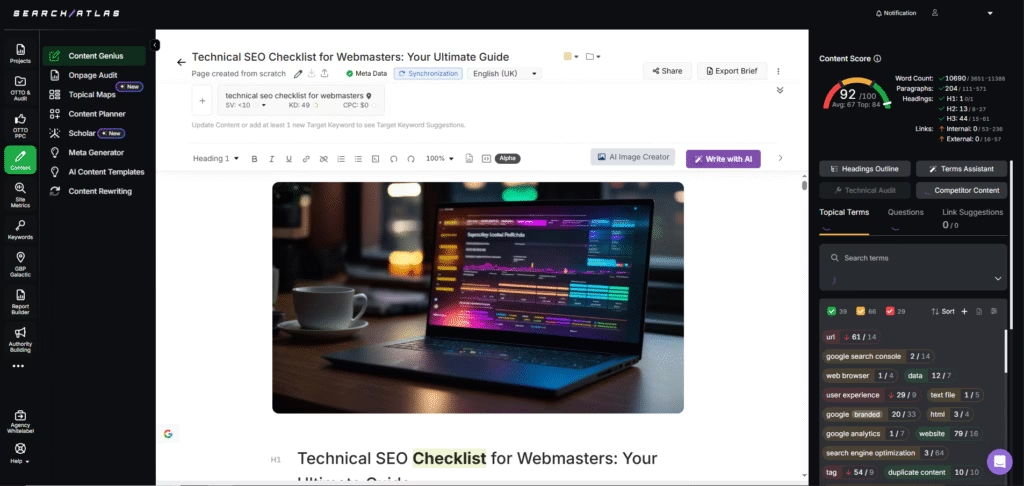
The tool analyzes headline length, structure, and semantic relevance, helping you choose the strongest option for media pickup and search visibility.
2. Write a Compelling Lead Paragraph
The lead paragraph summarizes the most important information in one to two sentences. The lead paragraph functions like a news lead and tells the reader what happened, who is involved, when it occurred, and why it matters. A clear lead ensures the reader understands your story without having to scan the entire release.
There are several best practices to write a lead paragraph. The best practices to write a lead paragraph are listed below.
- Begin with the announcement itself. Avoid general background or promotional phrasing.
- Include the company name, the product or service being announced, and the date.
- Use neutral, journalistic language that reflects objectivity.
- Keep the paragraph short and direct to ensure clarity.
3. Focus on the 5Ws (Who, What, When, Where, Why)
The 5Ws provide the core details every journalist needs to evaluate your story. The 5Ws help you communicate with precision and purpose.
There are 5Ws to focus on while writing press releases. The 5Ws to focus on while writing press releases are listed below.
- Who: Clearly identify the company, team, or individual responsible for the news.
- What: Explain what is being launched, announced, or changed.
- When: Specify dates, times, or launch windows.
- Where: Include relevant geographic or digital locations.
- Why: Provide a brief explanation of the importance, benefit, or relevance.
4. Include Quotes and Supporting Details
The body of the press release expands on the lead with supporting facts, quotes, and context. Quotes bring a human perspective to your story and help emphasize its significance. Quotes provide depth and make the release more credible to both journalists and readers.
Use quotes from executives, department leaders, or key partners. The quotes should be factual, relevant, and free from jargon. The quotes support your story with data, internal linking, or background information. Use clear transitions to connect quotes and details without redundancy to create great quotes.
5. Optimize with Keywords and Rich Media
Optimization improves both search visibility and media engagement. Strategic keyword use and multimedia elements can help your press release reach a broader audience and perform better across distribution channels. Including media files improves story pickup by publishers and increases reader engagement when shared online.
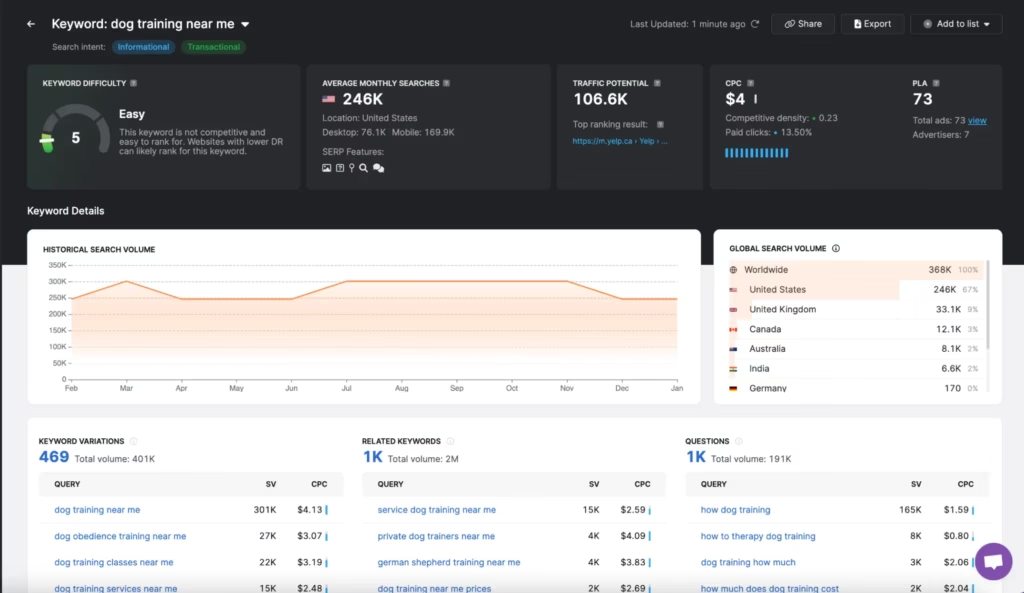
There are many best practices for keyword optimization. The many nest practices for keyword optimization are listed below.
- Identify and use relevant keywords in the headline, lead, and body.
- Add alt text to images and clear file names for media assets.
- Include infographics, screenshots, or video demos to illustrate key points.
- Limit outbound links to essential resources to avoid diluting focus.
6. Include Boilerplate and Contact Information
The boilerplate is a short paragraph that gives a standard overview of your company. It provides context for journalists and ensures that background information is always consistent across releases. Consistent boilerplates make it easier for journalists to describe your business accurately.
There are many tips to write a good press release boilerplate. The many tips to write a good press release boilerplate are listed below.
- Limit the boilerplate to two or three factual sentences.
- Focus on company mission, founding year, audience served, and business focus.
- Avoid marketing language and keep it objective.
- Add full press contact details, including name, title, phone, and email.
7. Close with a Clear Call to Action
The final section of your press release should tell the reader what to do next. A clear call to action (CTA) helps guide your audience toward the next step, whether that means visiting a product page, scheduling a demo, or contacting your team.
There are different ways to write a good call to action. The different ways to write a good call to action are listed below.
- Use one specific action to avoid confusion.
- Match the CTA to the goal of the press release.
- Link directly to the page or resource being promoted.
- Avoid generic CTAs like “learn more” unless paired with a direct link.
How to Write a Marketing Press Release with Automation?
Search Atlas distributes press releases through the Authority Building toolkit. This feature boosts online reach, builds authority, and improves rankings by sending AI-crafted press releases to major media outlets.
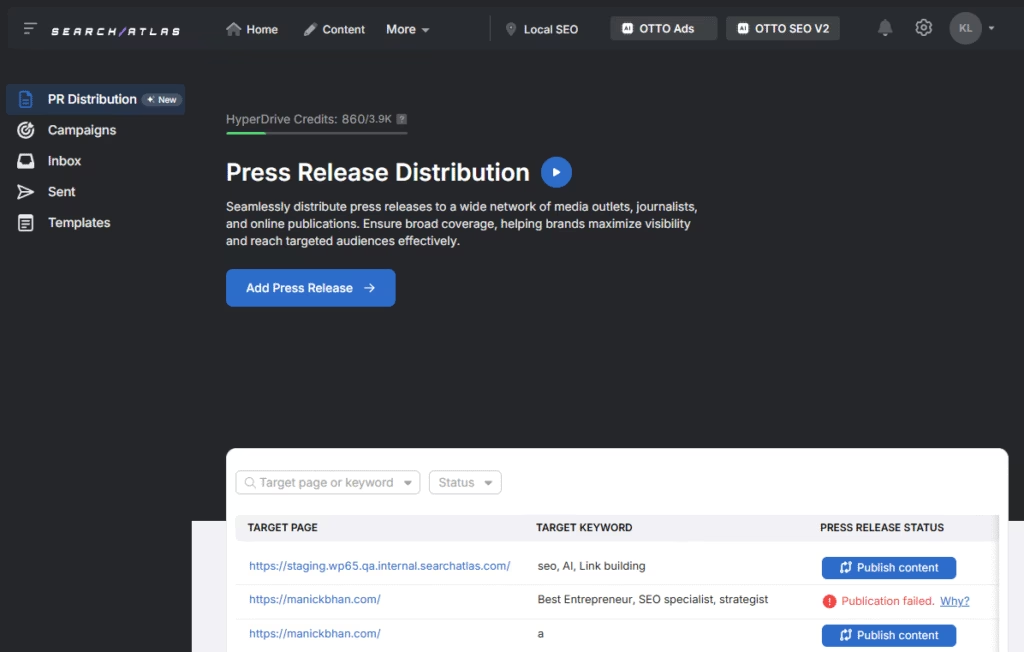
The process starts with “Add Press Release” and follows a simple three-step flow.
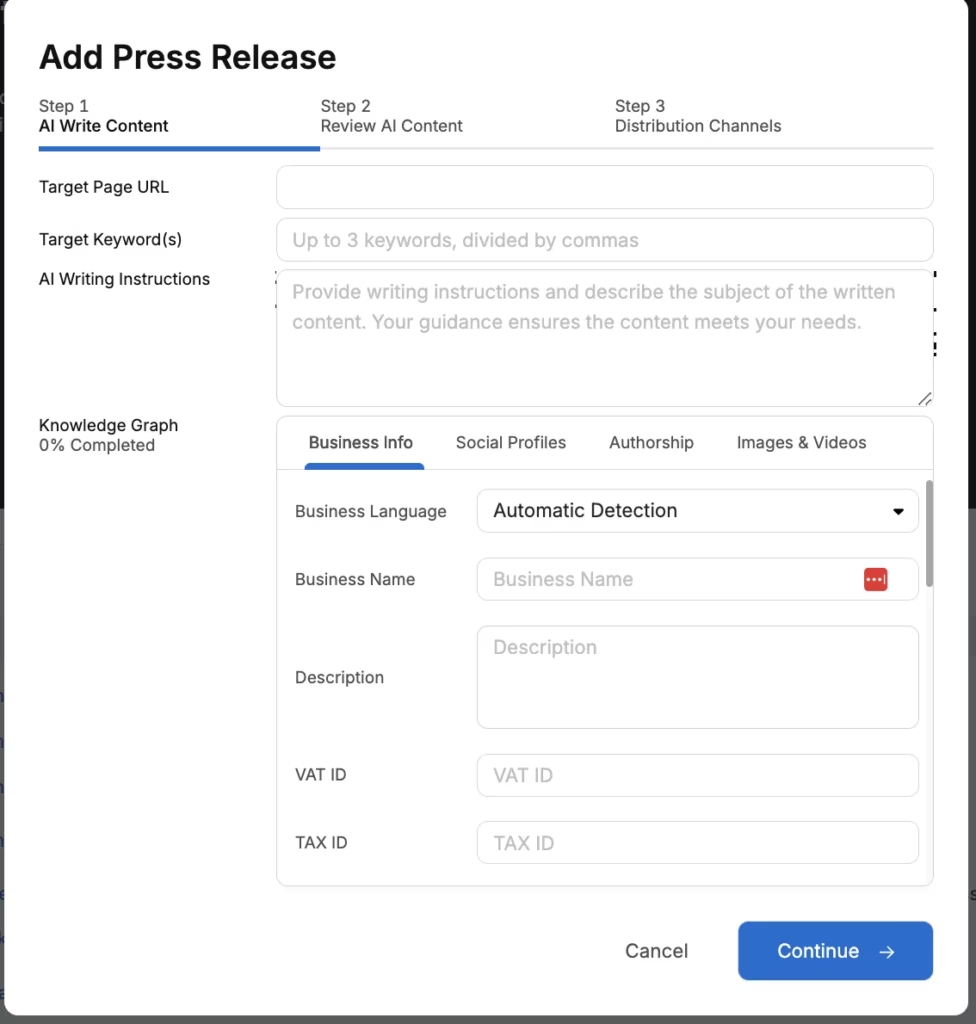
Users enter a Target Page URL, up to three Target Keywords, and detailed AI Writing Instructions. These include business info, social links, author name, and media files such as logos, images, or videos. These inputs guide the system to ensure accuracy, brand consistency, and SEO performance.
The system creates a press release using the provided data. Users preview the draft, apply changes, and approve by clicking “I reviewed & accept the content.”
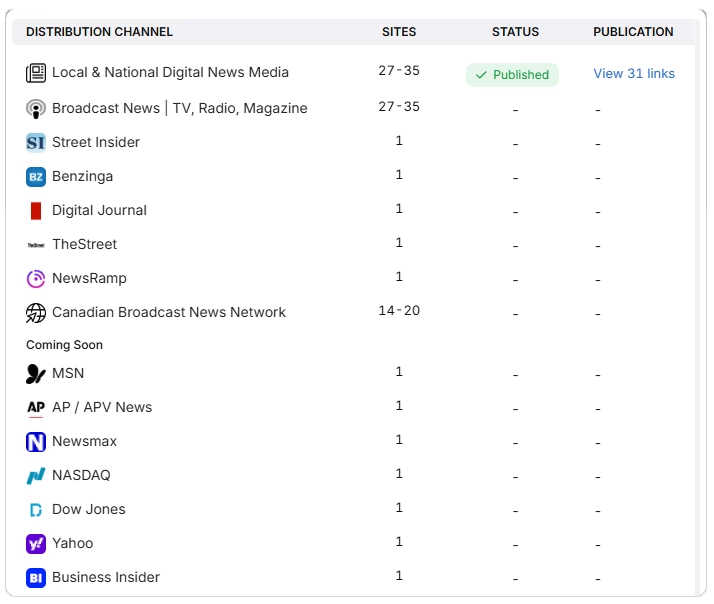
Search Atlas and OTTO SEO deliver full press release syndication through a direct and efficient distribution system. Users start by selecting from 15 media distribution channels, each showing reach and cost in Hyperdrive Credits. The setup ensures precise targeting and full budget clarity.
Syndication offers optional upgrades:
- Dynamic Press Release (3 credits) produces unique versions for each outlet.
- Boost (10 credits) expands reach, builds backlinks, and speeds up indexing across Local & National, Broadcast News, and Canadian News Network channels.
- Editorial Review (10 credits) adds a human review for quality assurance.
A real-time summary lists total distribution cost, dynamic variation fee, editorial review charge, and boost cost. Users finalize the process by clicking “Publish.” The platform submits the order and deducts the selected credits.
The dashboard tracks live progress. “View Status” displays updates by channel. “Published” confirms delivery and includes direct links. “Publish Content” resumes any unfinished draft. OTTO SEO directs each release to the right outlets for maximum reach and search performance.
What are Common Mistakes to Avoid with Marketing Press Releases?
Marketing press releases fail when they lack relevance, structure, or strategy. To avoid being overlooked by journalists, your release must offer real value, maintain journalistic integrity, and align with current industry interests.
There are many common press release mistakes. The many common press releases mistakes and their fixes are listed below.
Making It Too Promotional or Sales-Heavy
A marketing press release communicates news, not an advertisement. Promotional language signals low editorial value and turns journalists away. Use direct, factual statements grounded in data, milestones, or industry relevance.
Avoid exaggerations like “revolutionary,” “world-class,” or “unparalleled.” Keep the tone objective and clear. Emphasize the broader impact of the announcement instead of product details. Remove sales-style calls to action to maintain credibility and journalistic appeal.
Lacking a Clear News Hook
A news hook gives journalists and readers a reason to care about the announcement. Without one, the release feels self-serving and disconnected. Anchor the story to a current event, industry trend, or market change.
Support the hook with first-party data, partnerships, or company milestones. Frame the announcement as a relevant addition to a larger conversation already shaping the industry.
Ignoring SEO and Readability
A press release without search optimization fails to appear in relevant searches. Low readability reduces engagement and weakens trust. Place relevant keywords in the headline, subheadings, and opening paragraph. Keep paragraphs short and direct. Write in a clear, active voice without jargon. Add links to important resources or landing pages to support the announcement.
Failing to Distribute Effectively
Strong content loses impact through weak or unfocused distribution. Sending press releases to unrelated media contacts lowers response rates and harms sender reputation. Segment the media list by industry and journalist focus.
Personalize outreach emails with a clear reason the story fits the recipient’s beat. Use distribution platforms like Search Atlas to extend reach and monitor performance. Publish the release on the website and share it through owned media channels to reinforce visibility.
Neglecting the Broader Context
A press release without context lacks meaning. Journalists and readers expect to see why the announcement matters and how it fits into broader industry developments. Tie the news to current challenges, innovations, or shifts in the field.
Support the story with statistics, comparisons, or trends that show relevance. Define the impact for key audiences or stakeholders to make the message clear and valuable.
Overlooking Distribution Timing
The timing of a press release shapes media visibility and audience response. Publishing during low-interest periods reduces exposure and limits coverage. Exclude major holidays or industry events unless the news connects directly.
Match release dates with editorial calendars in the field to align with peak interest. Rely on media or brand monitoring tools to identify the strongest outreach windows and increase traction.
Including Too Much Information
Overly long press releases weaken clarity and bury the main story. Journalists lose interest when forced to sift through background before reaching the core message. Limit the release to one focused announcement under 500 words.
Lead with the most important points to secure attention early. Include only quotes and facts that strengthen the central message and support the announcement’s relevance.
Using Jargon or Hyperbole
Technical language and unverified claims reduce clarity and weaken trust. Most journalists prefer plain language that avoids buzzwords and delivers information directly. Use simple explanations in place of jargon to increase understanding.
Describe features by showing their impact or benefit to the audience. Back each important statement with data that confirms accuracy and strengthens credibility.
Forgetting a Clear Call to Action
A strong press release tells readers what to do next. Without a clear call to action, the message loses momentum and misses the chance to drive engagement. Place a CTA at the end that directs readers to a website, event, or contact form. Align the CTA with the announcement and provide value that matches audience interest.
Failing to Proofread and Format
Errors in grammar, punctuation, or structure signal carelessness and reduce credibility. Poor formatting lowers readability and discourages media pickup. Review the press release for typos and confusing language.
Write in short, direct paragraphs to help readers scan quickly. End with clear contact information and a concise boilerplate to complete the message with professionalism.
Why Automate Marketing Press Releases in 2025?
Automated press releases increase speed, precision, and strategic impact in 2025. AI completes drafting, formatting, editing, and distribution without delay. Teams gain more time to build media relationships and sharpen campaign strategy.
Each release reaches the right outlet with tailored messaging that fits audience needs. Real-time analytics measure engagement, pickup, and traffic to support smarter decisions. Search Atlas powers this system with tools that write, optimize, and syndicate press releases at scale.
Drive stronger results through automation with Search Atlas free trial!







